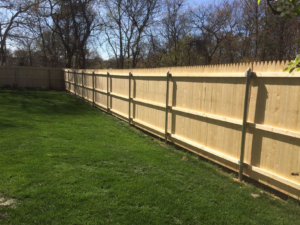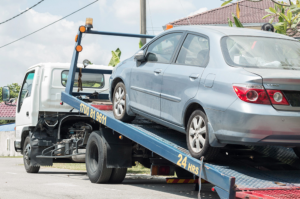If pests are causing major damage to your property or putting your family’s health at risk (like a serious termite infestation), you will need an exterminator. Exterminators use chemicals to clear out infestations quickly.
Exterminator Vancouver BC experts work with homeowners to prevent pest infestations, using landscaping tactics, cleaning strategies, and traps. They will often recommend Integrated Pest Management.

Correct identification is the first step in developing a pest management strategy and determining whether an infestation should be controlled or eradicated. It may require a number of different steps, including field scouting and/or sending samples to a laboratory for specific identification.
The identification of weeds, insects, plants and vertebrate animals is a critical element in making integrated pest management decisions. Identification allows the user to determine basic information about the pest, such as its life cycle and the time of year that it is most susceptible to control methods.
Many pests have multiple forms throughout their life cycles and can look very similar to non-pest species. For example, an immature beetle looks very similar to a caterpillar and can easily be confused for one another.
Accurate identification is especially important when attempting to develop a pest control program, as many pesticides work better for certain types of insects than others. In addition, poor plant growth and damage may be caused by environmental or cultural factors rather than a specific pest. Incorrectly identifying a pest could result in an inappropriate chemical treatment, which would not only be ineffective but could add unnecessary pesticide loads to the environment.
Pests may be controlled using a variety of practices, including preventative measures such as sanitation, proper firewood storage and vacuuming. In some situations, the use of pheromones can be used to lure pests away from desired areas without the need for any insecticide application.
Some of the more commonly encountered pests are listed in this pocket guide:
This information is intended to provide a starting point for those wishing to identify common nuisance and agricultural pests, such as ants, beetles, fleas, grasshoppers, flies, mites, wasps and ticks. For more specific pests, the reader should consult a pest identification guide from a university or government agency, or contact a local Cooperative Extension agent or pest management professional for assistance in determining the identity of the pest in question. The use of an online pest identification resource should be supplemented with a visit to your local library or a public reference center for additional printed materials that can assist in the identification of pests and their life stages.
Treatment
When people hire an exterminator, it’s typically because there is a pest infestation problem that needs to be resolved. Whether it’s ants marching across the kitchen counter or mice scurrying through the office, pests disrupt our sense of comfort and safety in the spaces that we inhabit. Luckily, professional exterminators are there to help.
After examining the pest issue, an exterminator can come up with a plan to eradicate the pests and get the customer back to feeling comfortable in their home again. This may involve spraying chemicals, setting traps, or sealing off entry points into the property.
Most of the time, the chemicals that an exterminator uses will be far less harsh than what you might find in a DIY store. They will also be better tailored to the specific pests being targeted, which makes them more effective. In some cases, the pests will require more than one treatment to eradicate fully.
In addition to using chemical treatments, exterminators will often recommend other methods to keep the pests at bay in the long term. For example, they might suggest enhancing sanitation practices, fixing structural issues that attract the pests, or using pheromone traps to discourage them.
When working in residential settings, exterminators may have to climb stairs or navigate cramped spaces like attics and crawl spaces to reach the pests. It’s important that they have the physical ability to do so without putting themselves or the customer at risk.
In the case of a serious pest infestation, the exterminator will use intense measures to eliminate the pests and prevent them from returning. This can involve fumigating the property, removing food sources, or sealing off entry points into the home.
As with other jobs in the field, an exterminator must be able to work safely and follow all relevant laws when handling dangerous chemicals. They will also need to be able to provide customers with clear instructions on how to monitor their pest infestation and maintain the results of the extermination service. Ideally, the client should contact their exterminator to book future treatments as needed.
Prevention
Preventative pest control methods are less dramatic than eradication treatments, and they are usually targeted to the specific species that is infesting your property. These methods include barriers, repellents, and exclusion techniques (blocking VIP entry points) that help keep pests out. Preventative pest control is a great option for those looking to avoid costly eradication treatments. Your pest management specialist can assist you with a preventative plan for termites, cockroaches, bed bugs, rodents, and other common home invaders. Many providers offer quarterly or annual inspections as well as free follow ups. Some also have special discounts for long-term plans. Check them out!
Customer Service
When dealing with any customer, it’s important to have good customer service skills. This includes being able to answer questions, make sure the customer is happy and help them understand their pest control needs. It’s also important to follow up with each new customer 2-3 times after their first service call, re-clarifying 1 or 2 key elements of the pest control process and what they can expect from you along the way. This ensures that the customer is fully satisfied and helps to build a loyal client base. This is true for both residential and commercial customers. Taking care of your pest problems quickly and professionally is the best way to avoid damage, health risks and costly repairs.






